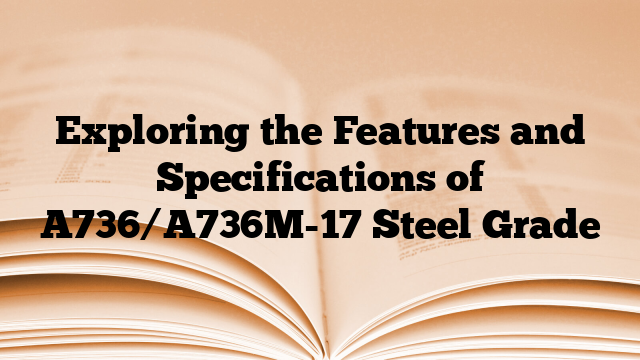ASTM A736/A736M-17 is a standard specification for pressure vessel plates, low-carbon age-hardening nickel-copper-chromium-molybdenum-columbium (niobium) alloy steel, intended primarily for welded pressure vessels.
The steel grade A736/A736M-17 is categorized into four classes, namely Class 1, Class 2, Class 3, and Class 4. Each class has its own composition, mechanical properties, and impact requirements.
Chemical Composition:
The chemical composition of A736/A736M-17 steel grade varies depending on the class. However, the general composition range includes carbon, manganese, phosphorus, sulfur, silicon, nickel, chromium, molybdenum, and columbium (niobium).
Mechanical Properties:
The mechanical properties of A736/A736M-17 steel grade also differ for each class. The minimum yield strength, tensile strength, and elongation vary according to the class. The steel is subjected to various heat treatments to achieve required mechanical properties.
Standard Number:
The standard number for A736/A736M-17 steel grade is ASTM A736/A736M-17. This standard provides the guidelines for the chemical composition, mechanical properties, heat treatment, and other specifications of the steel grade.
Corresponding Specifications:
A736/A736M-17 steel grade is specifically designed for pressure vessel applications. It corresponds to various international and industry standards, such as ASME SA736, EN 10028-6, and JIS G3115, which provide equivalent specifications for pressure vessel plates of similar compositions and mechanical properties.
Overall, A736/A736M-17 steel grade offers good weldability, high strength, and excellent toughness, making it suitable for use in welded pressure vessels operating at low temperatures. The specific class and corresponding specifications should be carefully considered based on the intended application and service conditions.

